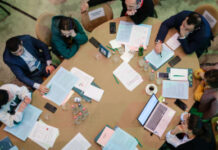 By Alin K. Gregorian
By Alin K. Gregorian
Mirror-Spectator Staff
BOSTON — On Friday, October 28, a new movement was launched in the Armenian world, one that aims to reshape how Armenians think of themselves and one in which they can join hands across the world as a network to help each other in the diaspora as well as Armenia.
The launch of Global Armenians was done through full-page ads in the New York Times and Hayastani Hanrapetutyun on Friday. The date was chosen to coincide with the 110th anniversary celebrations of the Armenian General Benevolent Union (AGBU) in New York.
The initial signatories whose names appeared in the advertisements include Ruben Vardanyan, Dr. Noubar Afeyan, Vartan Gregorian, Charles Aznavour, Lord Ara Darzi, Ambassador Edward Djerejian, Dickran Tevrizian, Samvel Karapetyan, Charles Aznavour and Salpi Ghazarian.
Afeyan, interviewed on Monday, October 31, said the choice of the newspapers reflects both the international world and Yerevan, as the capital city of the Armenian world.









